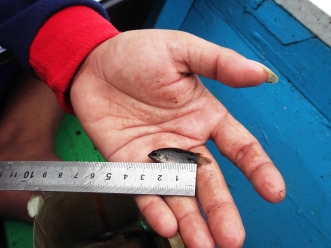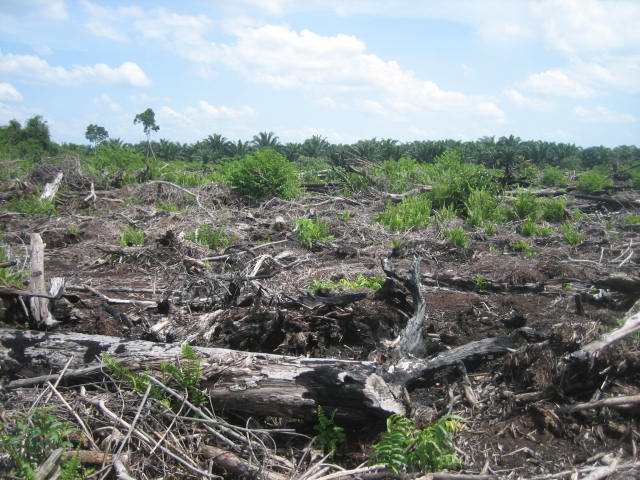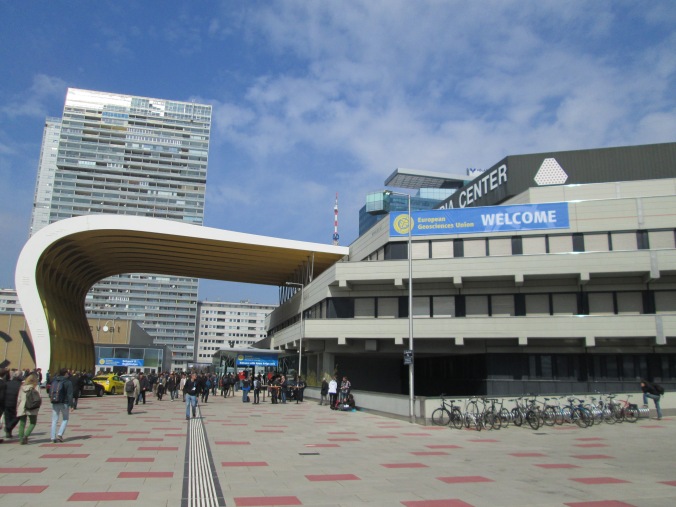
Freddie Draper presents his work on Amazonian peatlands
Tropical peatland scientists were out in force at the conference which attracted more than 360 delegates from around the world.
Tropical peatlands were mentioned at the very start of the conference, where the terrible fires of last year were mentioned. In the foreword to the book of abstracts, Prof. Manfred Niekisch wrote:
“As ecological problems in the tropics are still on the increase with manmade fires devastating Indonesian forests during the last year, we need to join our efforts more than ever before. Not only the forests are burning, but much worse the layers of coal and peat under the surface are burning, so the recovery is close to impossible for the soil and the native vegetation. The reasons are known: plantations for oil palms and soy bean seem to be financially more attractive than natural forests, but only when you look at them from a merely financial short term perspective. ”
Prof. Sue Page gave the plenary talk at the start of proceedings on Thursday, entitled “Swamped! The trials and tribulations of tropical peatland science.” Sue proposed that we move away from notions of ‘sustainable’ agriculture in tropical peatlands, which is usually impossible, and towards notions of ‘responsible’ peatland use. She also discussed ongoing work to find economically useful tree species which can be grown in peatlands where drainage is more limited or where the natural water table is maintained, thus allowing the existing carbon store to be preserved.

Enthusiastic discussions were had in the poster sessions
There were a wide range of other talks and posters on tropical peatland research, including presentations by Dr Katy Roucoux who discussed succession in Amazonian peatlands and future threats from planned infrastructure, and presentations from Dr Tom Kelly and Dr Freddie Draper on their research into Amazonian peatland palaeoecology. Freddie emphasised the need to understand long-term processes when looking at modern peatland plant assemblages. Indeed the conference was well attended by both (neo) ecologists and palaeoecologists and all of those present agreed on the value of greater dialogue between the two groups of scientists, who often work separately and publish in different journals.
A number of talks looked at carbon storage and biodiversity in oil palm plantations. Jennifer Lucey (York University) gave a presentation entitled “How can we maximise biodiversity and ecosystem services in oil palm landscapes? Providing the evidence base to aid better policy making”. Given the large areas of tropical peatland which have already been converted to oil palm plantation, talks such as this which cross the divide from science into policy making are of particular interest to all of us.
Tropical peatland scientists were well represented in the prizes awarded at the end of the conference. Kartika Hapsari won the Merrian Award for her talk on long-term carbon accumulation in a peatland in Sumatra. Kartika is currently studying for her PhD at Gottingen and we look forward to seeing her final published results. Hsiao-Hang Tao (Oxford) also won third prize for her poster entitled “Long-term effects of crop residue application on soil biota activities and functions in oil palm agroecosystems.”
The full program including abstracts can be found here. A quick search reveals that the word ‘peat’ appears 92 times! Next year the conference will be held in Brussels. We hope that those working in tropical peatlands will come along again in 2017.
 If you’ve just published a peaty paper, had an exciting fieldwork experience, written a report, or recently got stuck in a bog, the IPS would like to hear about it and send it out to the international peatland community via their monthly Peatland Snippets. Please send any relevant pieces (5 to 10 lines) to susann.warnecke (at) peatlands.org by the 20th of the month.
If you’ve just published a peaty paper, had an exciting fieldwork experience, written a report, or recently got stuck in a bog, the IPS would like to hear about it and send it out to the international peatland community via their monthly Peatland Snippets. Please send any relevant pieces (5 to 10 lines) to susann.warnecke (at) peatlands.org by the 20th of the month.








 The
The 


